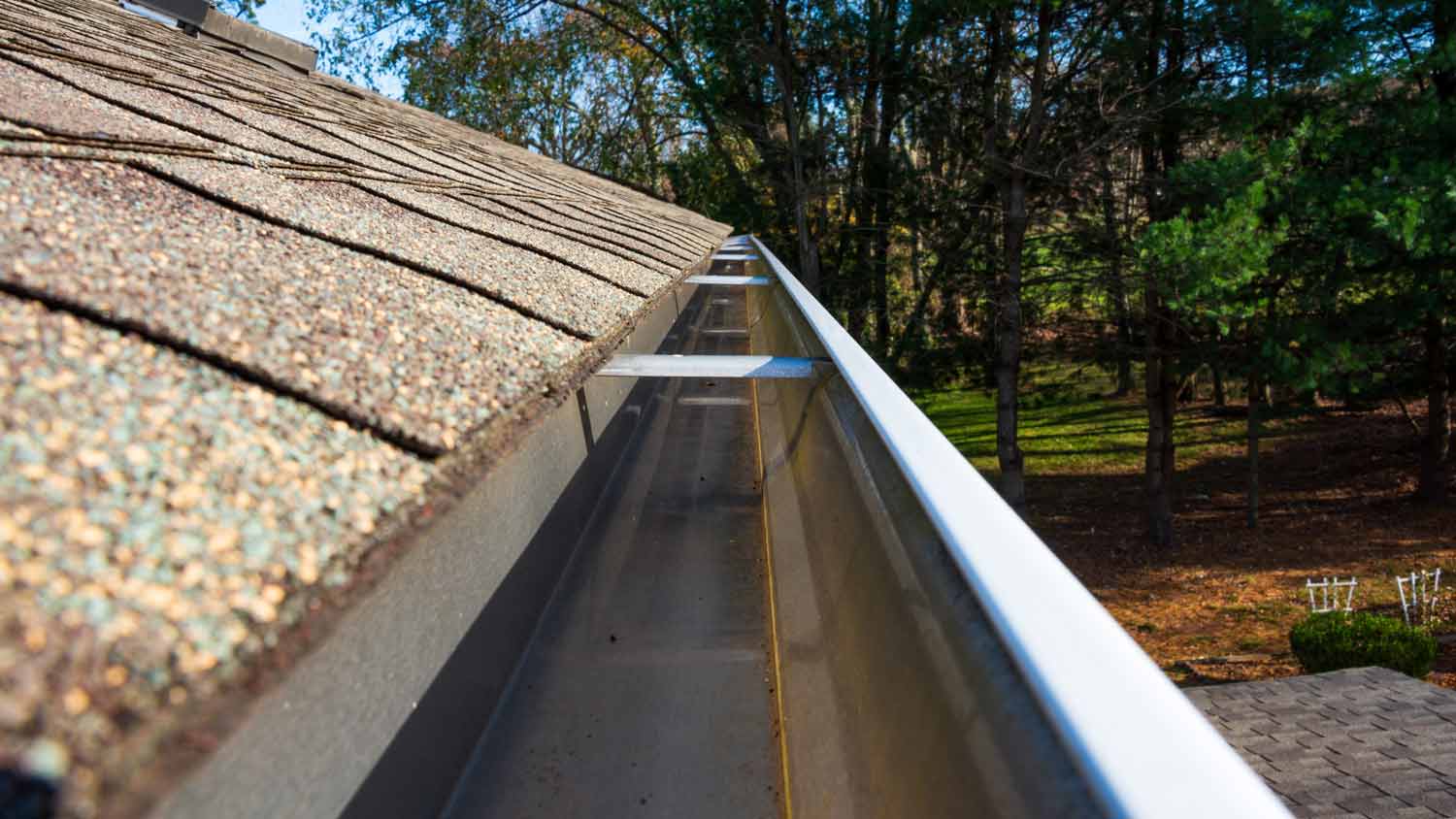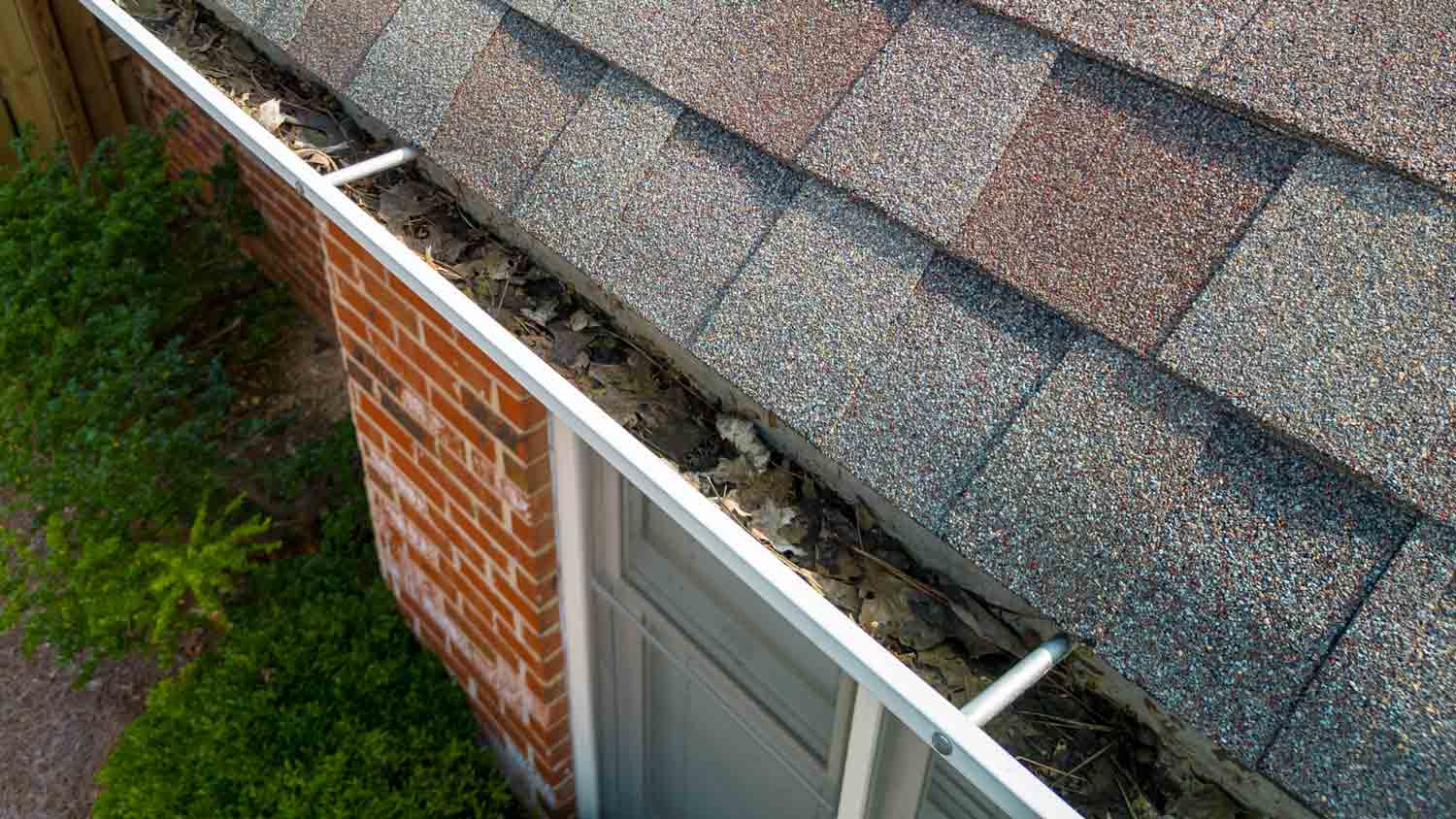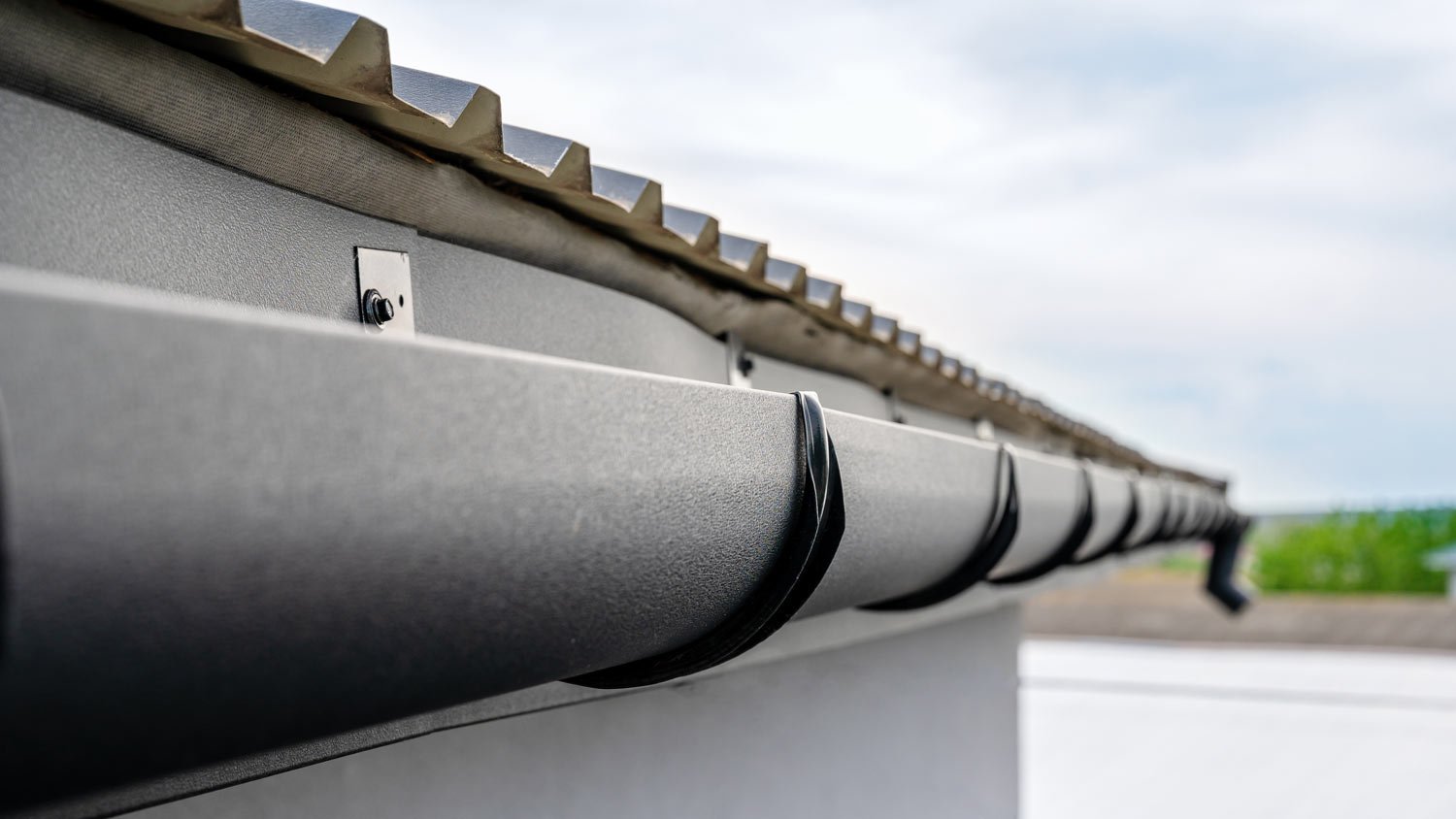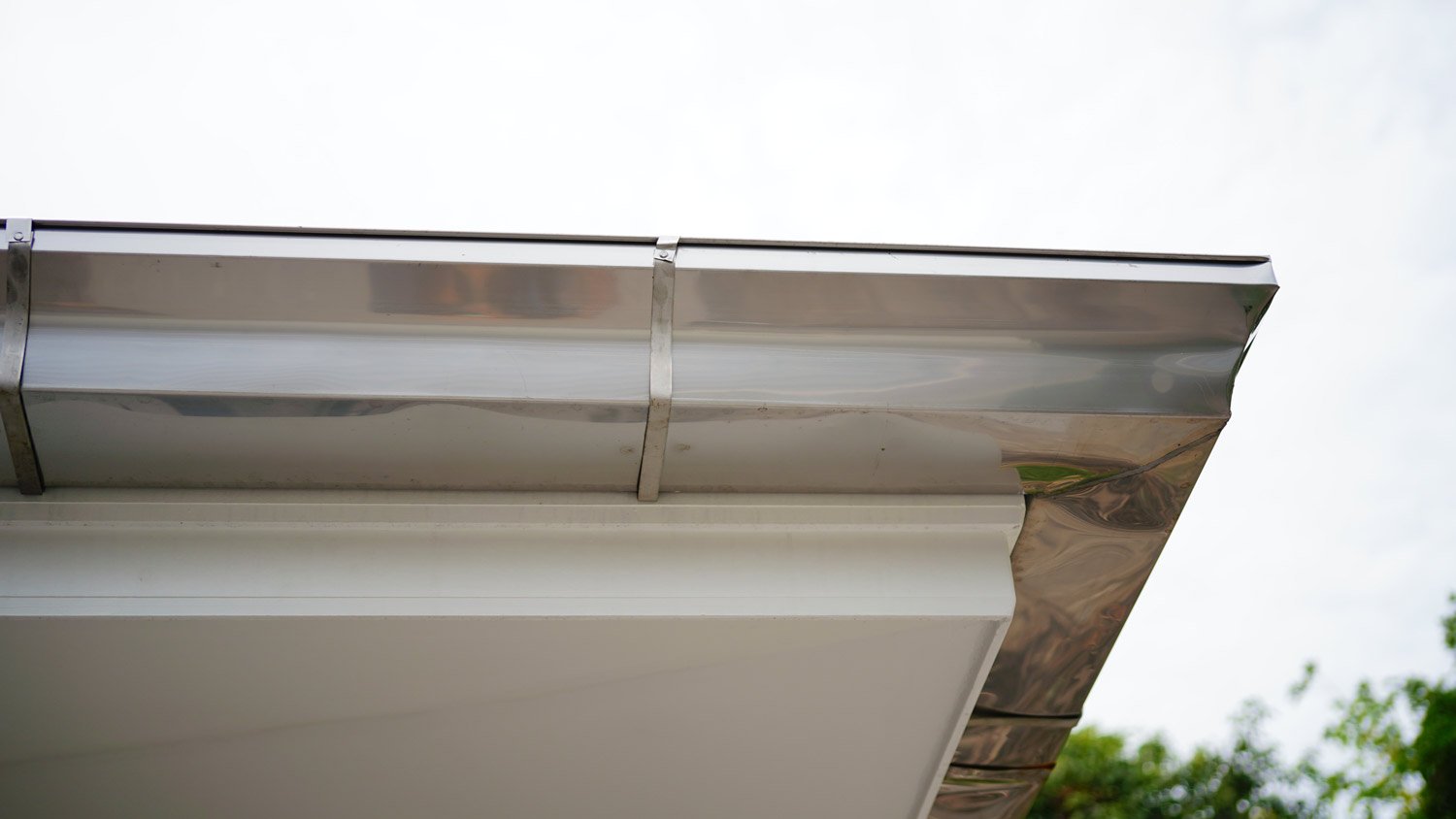
Gutter repair costs may not be as high as you think—but it depends on the type of damage you're addressing. Learn why you need to hire a gutter pro for this work.
A lot hangs on this decision—choose from 5 types of gutter hangers for your home


When installing new gutters for your home, you’ve got more than one decision to make. The type of gutter itself is probably high on your list, and you may be deliberating on whether you’ll hire a contractor or handle the job yourself. But another choice that lies before you is which type of gutter hanger is right for your home.
There are five main types of gutter hangers to choose from, each with its own pros and cons. Below, we’ll explore these various gutter hanger styles.

Many homeowners choose seamless gutters because they require less maintenance, have fewer leak points and have massive curb appeal. Installing obnoxious gutter hangers can detract from the overall aesthetic of these gutters, however.
That’s why hidden gutter hangers are a popular pairing with seamless gutters. Because the fasteners are installed at the center of the trough of the gutter, clipping to the back of the gutter and sliding under the front lip of the gutter, you can’t see them from the ground—that is, they’re hidden.
K-style gutters remain the most popular type of gutter—and hidden hangers work well with these.
| Pros | Cons |
|---|---|
| Invisible from the ground | Can be more expensive |
| Work well in areas with heavy rainfall | Typically require a professional installer |
| Ideal for K-style gutters |
Best for: Seamless appearance

Spikes and ferrules represent the most affordable option for hanging your gutters, but it’s also a dated approach that often leads to problems that may eventually require hiring a local gutter repair company to conduct some major repair work.
For this installation, you’ll drive a spike through a metal tube, called a ferrule, through both sides of the trough and into the fascia board. This method can lead to gutter leaks and early deterioration of the fascia. It also leaves gutters more prone to ice damage, so it’s not ideal if you live in a colder climate.
| Pros | Cons |
|---|---|
| Affordable option | Can lead to issues with fascia board |
| Possible to DIY | Can cause leaks |
| Potential for ice damage |
Best for: Budget-friendly gutter projects

Brackets and straps are a strong, durable option for hanging gutters, but they are exposed, which can be an eyesore, especially if you have otherwise seamless gutters.
These gutter hangers hold the gutter from underneath, making them ideal for half-round gutters.
While the bracket supports the gutter from underneath, a strap is then attached to the fascia board. Because of this format, you don’t actually put any holes in the gutter itself.
Correct installation is crucial; otherwise, you risk damaging the fascia or having the gutter become detached during heavy rainfall. Brackets and straps are admittedly among the tougher gutter hangers to install; we highly recommend working with a professional.
| Pros | Cons |
|---|---|
| Highly durable, offering solid support | Exposed, which can reduce aesthetics of the home |
| Great in areas with heavy rainfall and extreme weather changes | Usually require professional installation |
Best for: Half-round gutters

T-bar or T-strap hangers are another form of invisible gutter hanger, which is nice for those who want a seamless look. They also aren’t installed into a fascia board; this is great if you don’t want to drill too many holes into the fascia or if your home simply doesn’t have a fascia board.
How do they work? T-bar or T-strap hangers consist of a clip inside the gutter that has an attached metal strap that gets attached to the roof.
Again, installation is more challenging. It’s a good idea to hire a pro if using this technique to hang your gutters.
| Pros | Cons |
|---|---|
| Not visible from the ground | Probably requires a professional to install |
| Durable and strong | Can be expensive |
| Doesn’t use fascia board for installation |
Best for: Homes without a fascia board

Think of wrap-around gutter hangers as a hybrid between the bracket and strap mechanism and T-straps. These gutter hangers support the gutter from beneath, making them great for homes in areas with heavy rainfall and extreme temperatures.
Though they’re among the most durable types of gutter hangers, they do typically require professional installation, and they are exposed, which might be a non-starter if you want a seamless look for your gutter system.
| Pros | Cons |
|---|---|
| Among the most durable types of gutter hangers | Visible from the ground |
| Great in cold weather and heavy rainfall | Typically requires professional installation |
Best for: Homes that get heavy rainfall
According to Angi data, some of the most common gutter issues include sagging, broken, or loose gutters, which account for about 26% of problems. These issues can sometimes arise from improper gutter hanger installation or spacing.
The type of gutter hanger you choose is important, but so too is how you space them. Working with a professional gutter contractor is your best bet for proper spacing.
Contractors will ensure proper spacing to ensure even weight distribution and avoid potential leaks and water damage. If you live in an area that gets a lot of snow or ice, contractors will space hangers together more closely to support the weight.
In general, you’ll need one gutter hanger every:
2 to 3 feet for K-style and half-round gutters
1 to 2 feet if you live in a cold climate
Gutter installation can be challenging and dangerous, especially when working on multi-story homes. To ensure correct installation that doesn’t result in leaks, we highly recommend working with a professional gutter installer near you. A contractor will also be able to recommend the best type of gutter for your home and average rainfall, along with the best type of gutter hanger and even the right gutter size for your type of roof.
Maintaining your own gutters is much more manageable as a DIY task, however. Here’s how to clean the outside of your gutters, but don’t forget you’ll also need to routinely clear out the debris inside them. If your gutters regularly get clogged, consider investing in gutter guards. There are several types of gutter guards to choose from, and they can cut down on how often you need to clear your gutters (or reduce the frequency and cost of gutter cleaning if you prefer to stick with pros).
From average costs to expert advice, get all the answers you need to get your job done.

Gutter repair costs may not be as high as you think—but it depends on the type of damage you're addressing. Learn why you need to hire a gutter pro for this work.

Learn about the average cost of zinc gutters when having new gutters installed at your home. Long-lasting zinc gutters can cost twice as much as aluminum gutters.

Heated gutters are a great way to minimize gutter damage and maintenance. Use this guide to estimate your heated gutter cost before getting started.

Rain chains replace downspouts or gutter systems while adding beauty to a home. Keep reading to learn what a rain chain is and whether one is right for you.

This guide to how to cut gutters details the tools, supplies, and steps needed to fit custom gutters to your house.

Gutters have a huge responsibility to protect your home from water damage. These simple DIY gutter repair tips will keep rainwater flowing and your home happy.